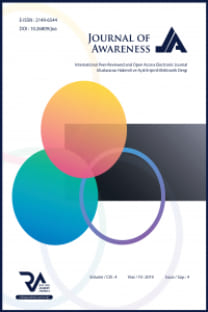THE PHENOMENON OF CALENDAR LYRICAL POETRY AND ITS GENESIS
ritual calendar songs, winter cycle songs, summer cycle songs
THE PHENOMENON OF CALENDAR LYRICAL POETRY AND ITS GENESIS
ritual calendar songs, winter cycle songs, summer cycle songs,
___
- ÇABEJ, E. (1975), Language Studies V, Prishtina: Rilindja.
- ÇUBELIQ, T. (1982) works cited; Group of authors, Various Popular Songs, Prishtina, IAP.
- KEKEZ, J. (1983), Introduction to Literature, Zagreb: Globus.
- Letërsi popullore (1986), Këngët e motmotit ndër shqiptarë, Prishtina, Rilindja.
- MITKO, T. (1890), Albanian Bee, Ed. Gjergj Pekmezi. Vienna: Rabeck.
- PLLANA, S. (2004), Studies in the field of folklore, Prishtina: Rilindja.
- SAKO, Z. (1984), Studies on folklore, ASH and RPS of Albania, Tirana: IKP.
- SIÇECA, S. (1990), Gjurmët e kultit të Shëngjergjit ne Prizren. Prishtina: Instituti Albanologjik.
- SKËNDI, S. (2007), Epic Oral Poetry of Albanians and Southern Slavs, Tirana: Botimet IDK.
- TIRTA, . (2004), Inter-Albanian Mythology, Albanian Academy of Sciences, Tirana: Institute of Folk Culture.
- ISSN: 2149-6544
- Başlangıç: 2016
- Yayıncı: Rating Academy
THE PHENOMENON OF CALENDAR LYRICAL POETRY AND ITS GENESIS
Atdhe HYKOLLI, Seniha KRASNIQI
UNESCO DÜNYA MİRAS LİSTESİNDE ARKEOLOJİNİN TEMSİLİYETİ: TÜRKİYE ÖRNEĞİ
ECONOMIC ASPECTS OF THE CITY OF PRIZREN XIII – XV CENTURY
KENTSEL GÜVENLİK İHTİYACININ TOPLUMSAL VE MEKÂNSAL YANSIMASI: KAPILI TOPLULUKLAR
Erman ÖZDEMİR, Çiğdem KAPTAN AYHAN
LİBERALİZME KÜLTÜREL FARKINDALIK AÇISINDAN ELEŞTİREL BİR BAKIŞ
MEKÂNSAL PLANLARIN YARGI DENETİMİ VE KARŞILAŞILAN ZORLUKLAR, BEYOĞLU (İSTANBUL) ÖRNEĞİ
İDEOLOJİK KÖRLÜĞÜN SİYASİ PARTİ ÜYELERİ ÜZERİNDE YANSIMASI
